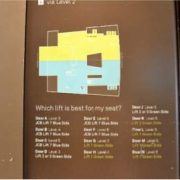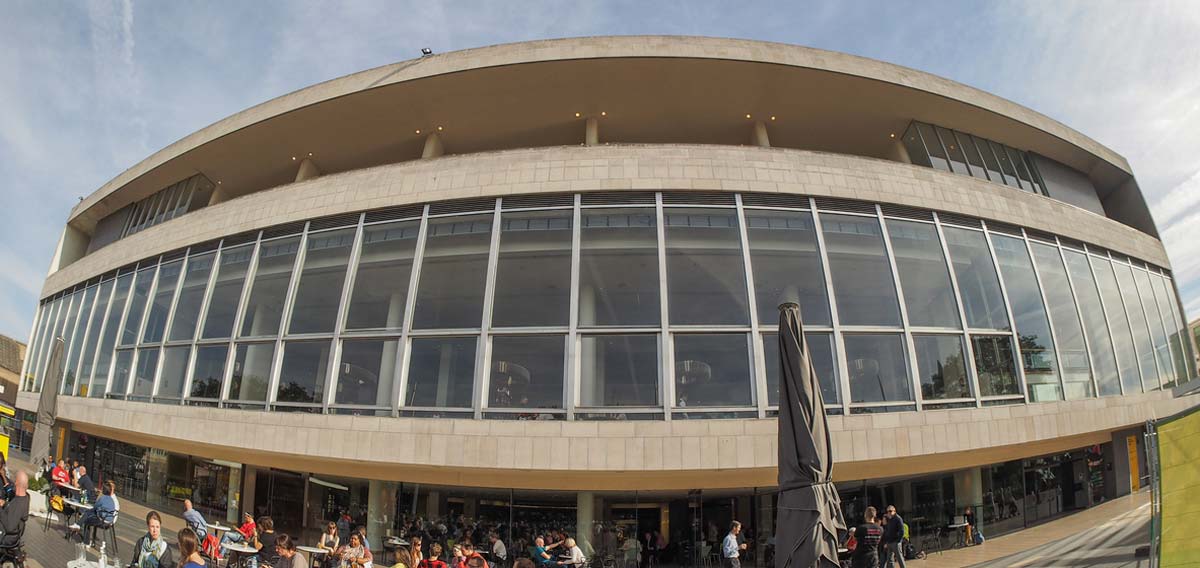Wayfinding at the Royal Festival Hall
 How design techniques can aid the navigation of physical spaces
How design techniques can aid the navigation of physical spaces
What is it that makes completing a maze so difficult? Would it be easier if you had a map? Yes, but it probably still would not be that easy. Without any landmarks in a maze to orientate yourself, how would you know where on the map you were? Neither do you have the ability to get a good overview of any large area of space. And, of course, there aren’t any signs.
All of these factors make mazes difficult to navigate. Understanding these points and anticipating how visitors orientate themselves, are critical when designing a physical space’s wayfinding.
Wayfinding refers to information systems that guide people through a physical environment and enhance their understanding and experience of the space.
There are many techniques that can be used to ensure that a visitor is able to navigate themselves around and make sense of a physical space – the map being the best known of these.
Transport for London (TfL) states that effective wayfinding is, “based on the principles of mental mapping, progressive disclosure of information, consistency of naming, product design and graphic language.” But what does this look like in practice?
The Royal Festival Hall: a visitor perspective

The Royal Festival Hall is a large, symmetrical building which has the main auditorium in the middle, suspended above the first and second floors. It has many further rooms and spaces, spread across six floors.
Mental mapping
The Royal Festival Hall has a lot of open space, giving you the ability to get a good view of different areas.
Signs and places within the building are often placed in visitors’ natural line of sight, giving you an easy overview of where you are in relation to other points within the venue. For example, the ‘Shop’ sign on the corner of the shop, shown above right, is placed in the natural line of sight from various points on the second floor, which make it easier to identify and find.

Landmarks are an important way of orientating yourself and creating a mental map of where you are. How often have you given directions such as, “take a left at the big supermarket, and carry on until you get to the roundabout”?



A similar technique is used to navigate visitors to their allocated entrance to the main auditorium. There are multiple entrances, each lettered, accessible from different floors of the venue.
Information on which lift is best used to access each door is provided on the second floor (where most people enter the Royal Festival Hall), next to the lifts. However, this information is not provided by lifts on other floors, neither is there much indication of where each door is located at other places within the building.

Consistent naming: All rooms and places are clearly named (e.g. the Archive Studios, and Shop, pictured above). These names are used consistently on boards and signs throughout the venue, as pictured above.

The wayfinding experience: remember to consider beyond the obvious
As the examples drawn from our experience at the Royal Festival Hall show, creating a good wayfinding experience is dependent on more factors than just a map or some good signs. These factors include consistency, use of graphic language, availability of landmarks, not overwhelming visitors with information, the architecture of the building, and presence of sufficient open space.
These are all important considerations when anticipating whether visitors will have a good understanding of where they are, and where they want to go.

For expert advice and research on improving wayfinding, get in touch
 How design techniques can aid the navigation of physical spaces
How design techniques can aid the navigation of physical spaces